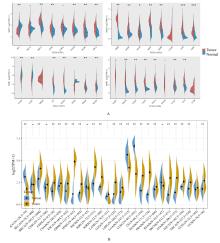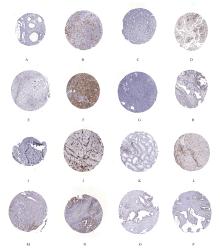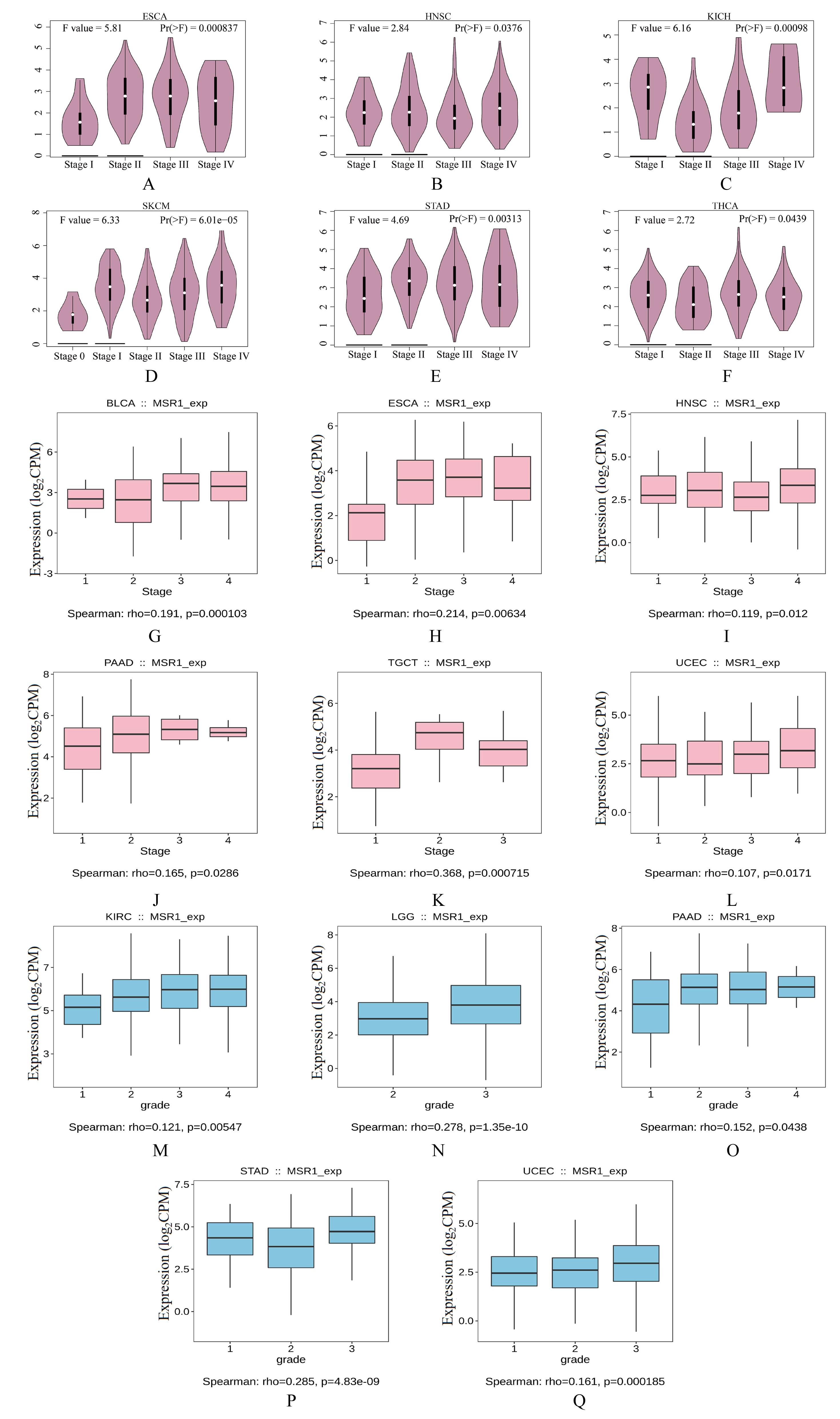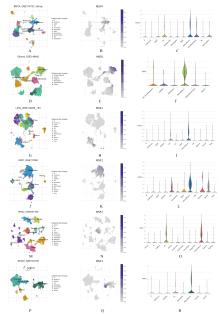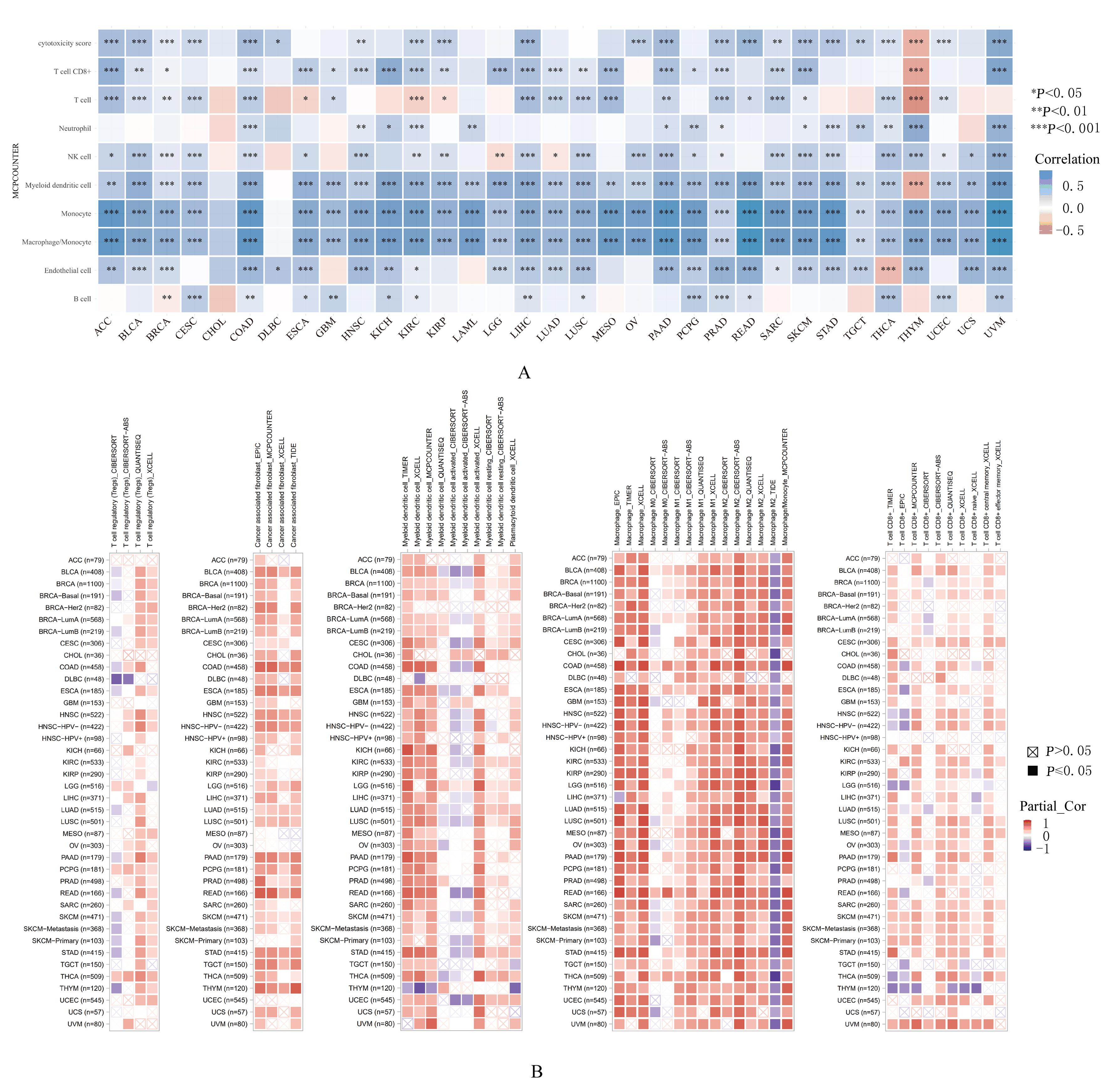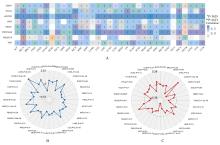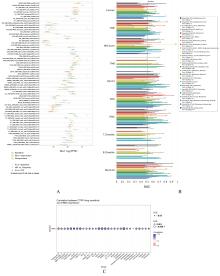| 1 |
QIN S, XU L P, YI M, et al. Novel immune checkpoint targets: moving beyond PD-1 and CTLA-4[J]. Mol Cancer, 2019, 18(1): 155.
|
| 2 |
LIU J F, LICHTENBERG T, HOADLEY K A, et al. An integrated TCGA pan-cancer clinical data resource to drive high-quality survival outcome analytics[J]. Cell, 2018, 173(2): 400-416.
|
| 3 |
SONG J, TANG Y Y, LUO X Y, et al. Pan-cancer analysis reveals the signature of TMC family of genes as a promising biomarker for prognosis and immunotherapeutic response[J]. Front Immunol, 2021, 12: 715508.
|
| 4 |
PLÜDDEMANN A, NEYEN C, GORDON S. Macrophage scavenger receptors and host-derived ligands[J]. Methods, 2007, 43(3): 207-217.
|
| 5 |
HERBER D L, CAO W, NEFEDOVA Y, et al. Lipid accumulation and dendritic cell dysfunction in cancer[J]. Nat Med, 2010, 16(8): 880-886.
|
| 6 |
JHUNJHUNWALA S, HAMMER C, DELAMARRE L.Antigen presentation in cancer: insights into tumour immunogenicity and immune evasion[J]. Nat Rev Cancer, 2021, 21(5): 298-312.
|
| 7 |
YI H F, GUO C Q, YU X F, et al. Targeting the immunoregulator SRA/CD204 potentiates specific dendritic cell vaccine-induced T-cell response and antitumor immunity[J].Cancer Res, 2011,71(21):6611-6620.
|
| 8 |
YU X F, GUO C Q, FISHER P B, et al. Scavenger receptors: emerging roles in cancer biology and immunology[J]. Adv Cancer Res, 2015, 128: 309-364.
|
| 9 |
FROST F G, CHERUKURI P F, MILANOVICH S, et al. Pan-cancer RNA-seq data stratifies tumours by some hallmarks of cancer[J]. J Cell Mol Med, 2020, 24(1): 418-430.
|
| 10 |
SUN D Q, WANG J, HAN Y, et al. TISCH: a comprehensive web resource enabling interactive single-cell transcriptome visualization of tumor microenvironment[J].Nucleic Acids Res,2021,49(D1): D1420-D1430.
|
| 11 |
LI T W, FU J X, ZENG Z X, et al. TIMER2.0 for analysis of tumor-infiltrating immune cells[J]. Nucleic Acids Res, 2020, 48(W1): W509-W514.
|
| 12 |
ZENG Z X, WONG C J, YANG L, et al. TISMO: syngeneic mouse tumor database to model tumor immunity and immunotherapy response[J]. Nucleic Acids Res, 2022, 50(D1): D1391-D1397.
|
| 13 |
FU J X, LI K R, ZHANG W B, et al. Large-scale public data reuse to model immunotherapy response and resistance[J]. Genome Med, 2020, 12(1): 21.
|
| 14 |
LIU C J, HU F F, XIA M X, et al. GSCALite: a web server for gene set cancer analysis[J]. Bioinformatics, 2018, 34(21): 3771-3772.
|
| 15 |
SUNG H, FERLAY J, SIEGEL R L, et al. Global cancer statistics 2020: GLOBOCAN estimates of incidence and mortality worldwide for 36 cancers in 185 countries[J]. CA Cancer J Clin, 2021, 71(3): 209-249.
|
| 16 |
PARDOLL D M. The blockade of immune checkpoints in cancer immunotherapy[J]. Nat Rev Cancer, 2012, 12(4): 252-264.
|
| 17 |
BEAR A S, VONDERHEIDE R H, O’HARA M H. Challenges and opportunities for pancreatic cancer immunotherapy[J]. Cancer Cell, 2020, 38(6): 788-802.
|
| 18 |
SUZUKI H, KURIHARA Y, TAKEYA M, et al. A role for macrophage scavenger receptors in atherosclerosis and susceptibility to infection[J]. Nature, 1997, 386(6622): 292-296.
|
| 19 |
NEYEN C, PLÜDDEMANN A, MUKHOPADHYAY S,et al. Macrophage scavenger receptor a promotes tumor progression in murine models of ovarian and pancreatic cancer[J]. J Immunol, 2013, 190(7): 3798-3805.
|
| 20 |
SHIGEOKA M, URAKAWA N, NAKAMURA T,et al.Tumor associated macrophage expressing CD204 is associated with tumor aggressiveness of esophageal squamous cell carcinoma[J]. Cancer Sci, 2013,104(8): 1112-1119.
|
| 21 |
OHTAKI Y, ISHII G, NAGAI K J, et al. Stromal macrophage expressing CD204 is associated with tumor aggressiveness in lung adenocarcinoma[J]. J Thorac Oncol, 2010, 5(10): 1507-1515.
|
| 22 |
HIRAYAMA S, ISHII G, NAGAI K J, et al. Prognostic impact of CD204-positive macrophages in lung squamous cell carcinoma: possible contribution of Cd204-positive macrophages to the tumor-promoting microenvironment[J]. J Thorac Oncol, 2012, 7(12): 1790-1797.
|
| 23 |
SAADATPOUR A, LAI S J, GUO G J, et al. Single-cell analysis in cancer genomics[J]. Trends Genet, 2015, 31(10): 576-586.
|
| 24 |
FETAH K L, DIPARDO B J, KONGADZEM E M, et al. Cancer modeling-on-a-chip with future artificial intelligence integration[J].Small, 2019,15(50): e1901985.
|
| 25 |
HANAHAN D, et al. Hallmarks of cancer: the next generation[J]. Cell, 2011, 144(5): 646-674.
|
| 26 |
BROADFIELD L A, PANE A A, TALEBI A, et al. Lipid metabolism in cancer: new perspectives and emerging mechanisms[J]. Dev Cell, 2021, 56(10): 1363-1393.
|
| 27 |
BIAN X L, LIU R, MENG Y, et al. Lipid metabolism and cancer[J]. J Exp Med, 2021, 218(1): e20201606.
|
| 28 |
RAMAKRISHNAN R, TYURIN V A, VEGLIA F, et al. Oxidized lipids block antigen cross-presentation by dendritic cells in cancer[J]. J Immunol, 2014, 192(6): 2920-2931.
|
| 29 |
SICA A, LARGHI P, MANCINO A, et al. Macrophage polarization in tumour progression[J]. Semin Cancer Biol, 2008, 18(5): 349-355.
|
| 30 |
YEUNG O W H, LO C M, LING C C, et al. Alternatively activated (M2) macrophages promote tumour growth and invasiveness in hepatocellular carcinoma[J]. J Hepatol, 2015, 62(3): 607-616.
|
| 31 |
TOGASHI Y, SHITARA K, NISHIKAWA H. Regulatory T cells in cancer immunosuppression-implications for anticancer therapy[J]. Nat Rev Clin Oncol, 2019, 16(6): 356-371.
|
| 32 |
KIM J H, KIM B S, LEE S K. Regulatory T cells in tumor microenvironment and approach for anticancer immunotherapy[J]. Immune Netw, 2020, 20(1): e4.
|
| 33 |
WEI W F, CHEN X J, LIANG L J, et al. Periostin+ cancer-associated fibroblasts promote lymph node metastasis by impairing the lymphatic endothelial barriers in cervical squamous cell carcinoma[J]. Mol Oncol, 2021, 15(1): 210-227.
|
| 34 |
TUMEH P C, HARVIEW C L, YEARLEY J H,et al. PD-1 blockade induces responses by inhibiting adaptive immune resistance[J].Nature,2014,515(7528):568-571.
|
| 35 |
CHAN T A, YARCHOAN M, JAFFEE E, et al. Development of tumor mutation burden as an immunotherapy biomarker: utility for the oncology clinic[J]. Ann Oncol, 2019, 30(1): 44-56.
|
| 36 |
VILAR E, GRUBER S B. Microsatellite instability in colorectal cancer-the stable evidence[J]. Nat Rev Clin Oncol, 2010, 7(3): 153-162.
|
| 37 |
WANG X Y, FACCIPONTE J, CHEN X, et al. Scavenger receptor-A negatively regulates antitumor immunity[J]. Cancer Res, 2007, 67(10): 4996-5002.
|
 ),Zhong LU2
),Zhong LU2
